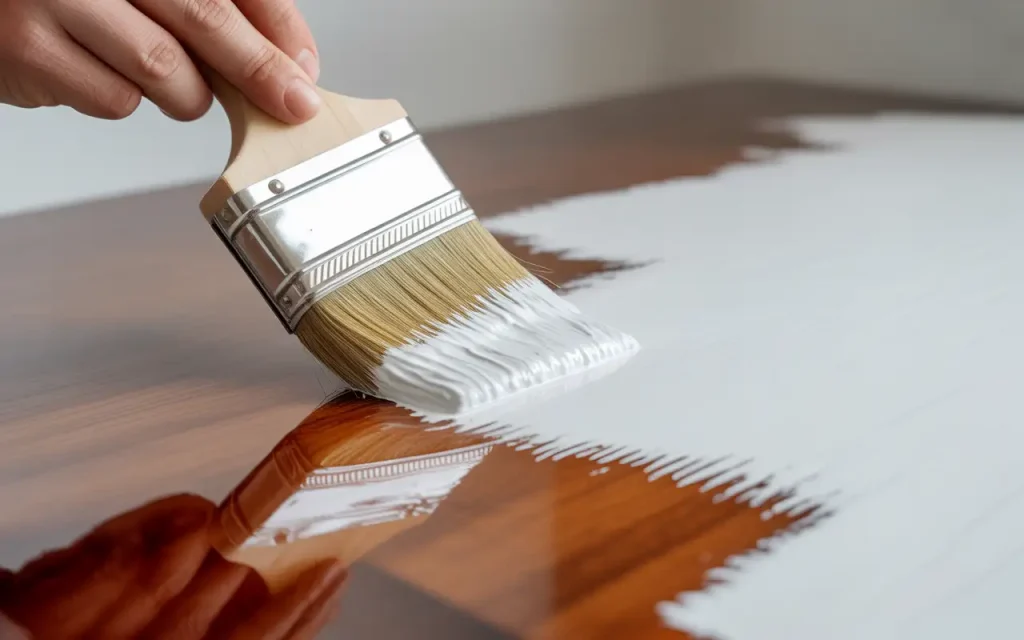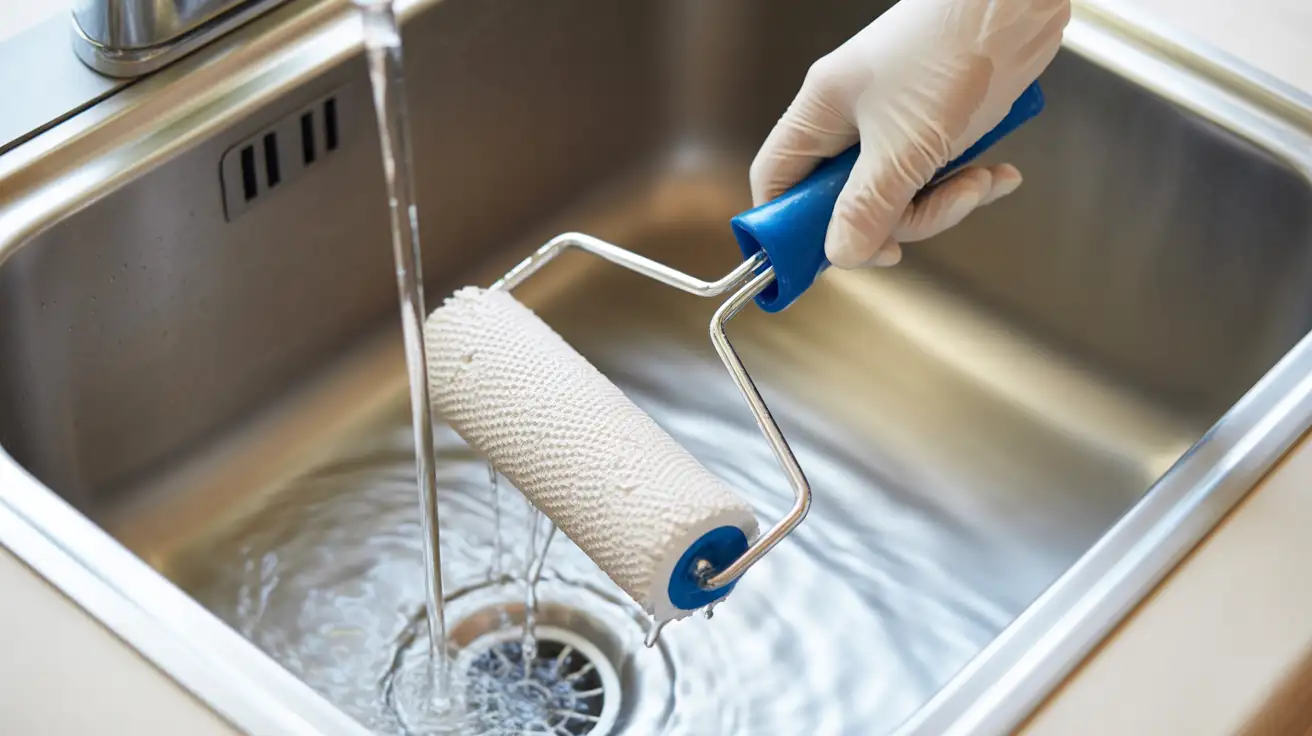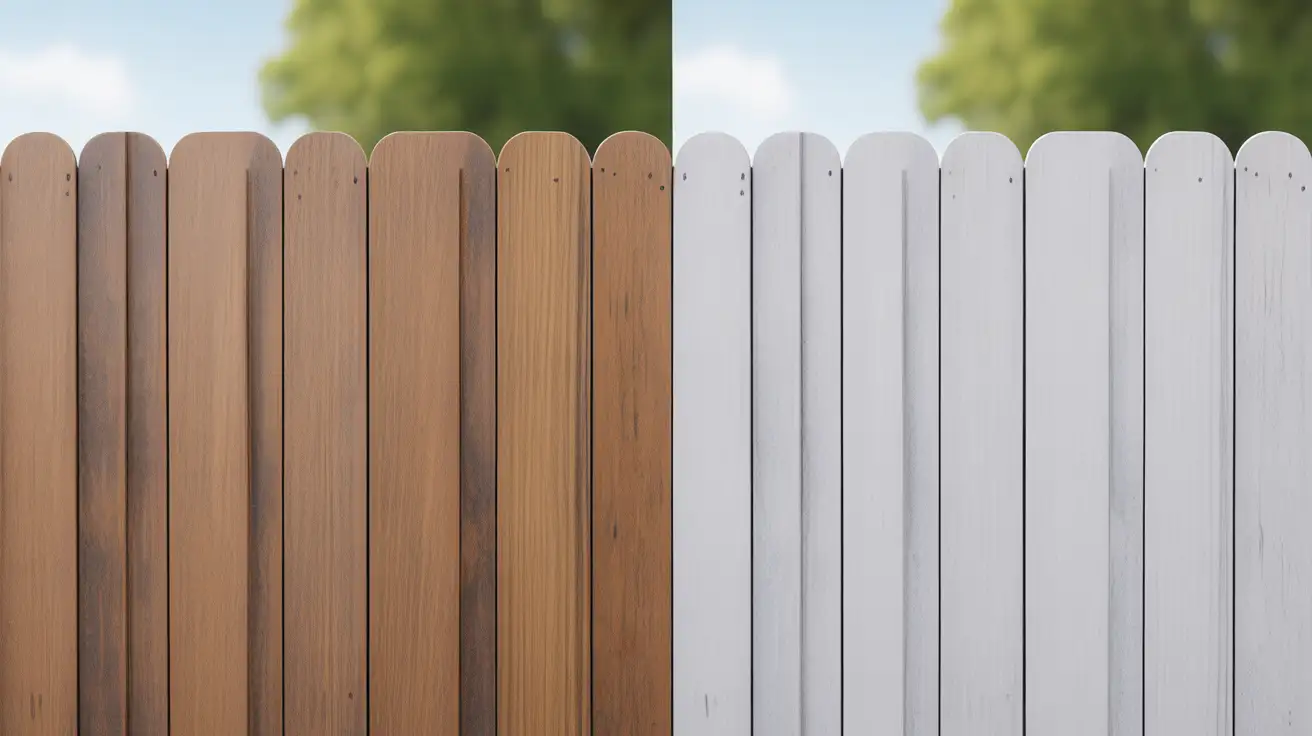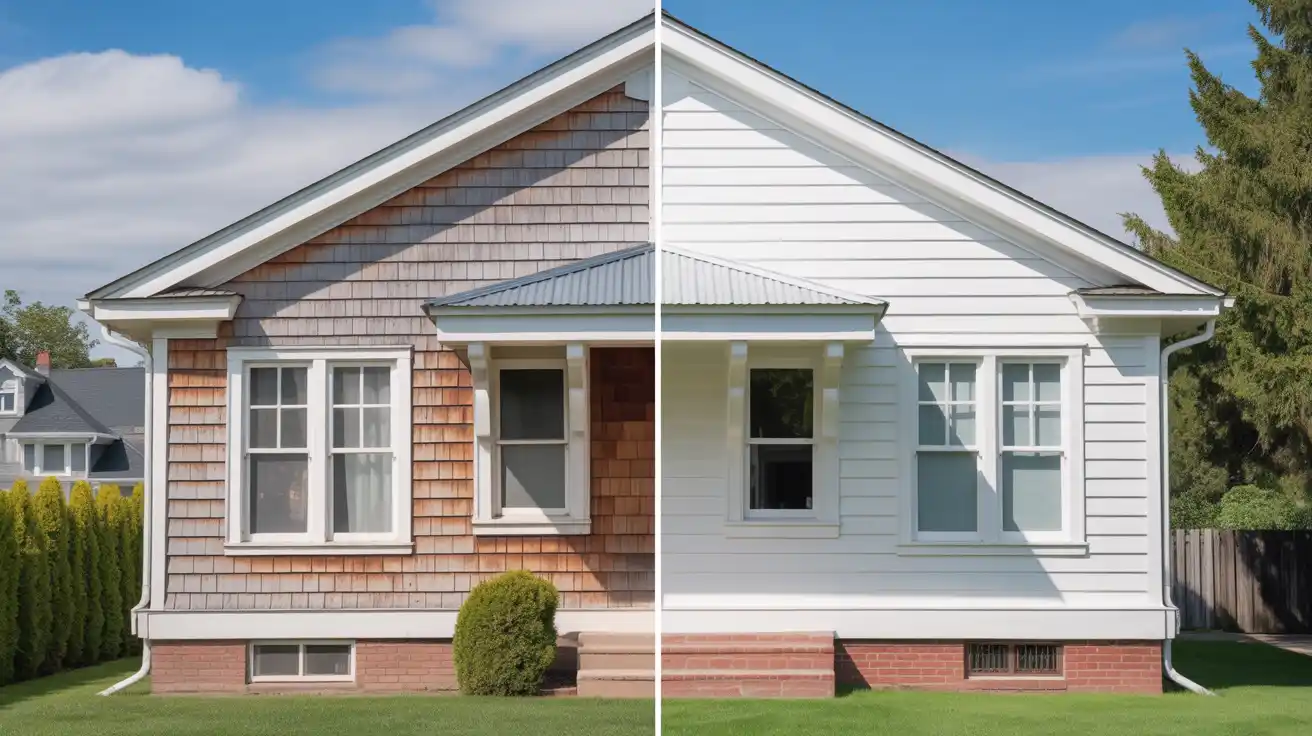If you’ve ever stared at a shiny dresser, cabinet, or wood floor and thought, “Can you paint over polyurethane?” The quick answer is yes, but only with the proper prep. Polyurethane is a tough, glossy finish that resists paint. To make a new paint stick, you’ll need sanding, cleaning, and the proper primer. Skip those steps, and the paint will peel in weeks. This guide shows you exactly how to do it properly.
The secret isn’t in removing the poly; it’s in creating a surface that paint can grip. We’ll walk you through every step, from choosing the correct primer to avoiding common mistakes that waste your time and money.
Table of Contents
ToggleWhat Is Polyurethane?
Polyurethane is a liquid plastic that dries into a hard, protective coating on wood surfaces. Think of it as an invisible shield that protects furniture, cabinets, and floors from scratches, water damage, and everyday wear.
It comes in two main types: oil-based and water-based. Oil-based poly gives a warm, amber glow and takes longer to dry. Water-based dries straightforward and fast, but costs more. Both create that glossy, smooth finish you see on kitchen cabinets and hardwood floors.
The coating forms multiple layers of protection. Most furniture has at least three coats applied. This thick barrier is what makes painting polyurethane wood tricky; paint needs texture to grip, and poly is designed to be smooth.
Why Painting Over Poly Is Different
Standard paint won’t stick to polyurethane’s slick surface. The finish repels moisture and creates a non-porous barrier. When you brush paint directly on it, you’re essentially painting on plastic.
The paint might look fine at first. Give it a few days, and you’ll see bubbling, peeling, or chipping. This happens because there’s no mechanical bond between the layers. The paint sits on top with nothing to hold it in place.
That’s why surface prep matters more than the paint itself. You need to rough up that smooth finish and use products designed to bridge the gap between poly and paint.
You may also read: Can you paint vinyl siding?
What Types Of Paint Can You Use Over Polyurethane
Not all paints work for painting over urethane. Your choice affects how long the finish lasts and how much prep work you need.
- Oil Based Paint This is the gold standard for painting polyurethane surfaces. It bonds better than other options and creates a harder finish. The downside? Strong fumes and longer drying times. You’ll need good ventilation and patience.
- Latex Paint Over Polyurethane Water based latex can work if you use a bonding primer first. It dries faster and cleans up with soap and water. Modern latex formulas are much better than older versions, but they still need proper priming to stick.
- Chalk Paint Chalk paint grips better than regular latex because of its thick texture. Some people skip sanding with chalk paint, but we don’t recommend it. Light sanding still gives better results.
- Acrylic Urethane Paint This hybrid combines acrylic paint with urethane for extra durability. It’s harder to find but works great on cabinets and furniture that gets heavy use.
The best choice depends on your project. Cabinets need tougher paint than a decorative side table. High-traffic surfaces deserve oil based paint or acrylic urethane for maximum durability.
Recommended Supplies for Painting Over Polyurethane
Having the right tools makes this job easier and prevents mistakes. Here’s what you need:
Safety Gear
- Protective eyewear
- Face mask or respirator (for mineral spirits and primer)
- Rubber gloves
- Work clothes you don’t mind ruining
Cleaning Supplies
- Mineral spirits or TSP cleaner
- Lint free cloths
- Bucket of clean water
- Degreasing cleaner
Sanding Tools
- 80-grit sandpaper (for initial sanding)
- 120-grit sandpaper (for smoothing)
- 220-grit sandpaper (for final prep)
- Sanding block or electric sander
- Tack cloth
Application Materials
- Oil based primer (non-negotiable)
- High-quality paintbrushes
- Paint roller for large areas
- Wood filler (for repairs)
- Paint tray
Don’t cheap out on brushes. Low-quality brushes leave streaks in thick primer that show through your final coat. Spend a few extra dollars on brushes made for oil-based products.
How to Paint Over Polyurethane: Step-by-Step Process

Step 1: Safety First
Set up your workspace before you start. Open windows and doors for air circulation. Chemical fumes from primer and mineral spirits can make you dizzy or sick.
Put on your safety gear. This isn’t optional. Mineral spirits irritate skin, and TSP is caustic. A respirator protects your lungs better than a basic dust mask.
Move anything you don’t want splattered. Cover floors with drop cloths. If you’re working on cabinets, remove doors and hardware first. Label everything so reassembly is easy.
Step 2: Clean the Surface Thoroughly
Dirt, grease, and grime prevent paint from bonding. Kitchen cabinets are especially gross, as years of cooking oil create an invisible film.
Mix TSP according to package directions (usually ¼ cup per gallon of water). Dip a sponge in the solution and scrub in circles. Work in small sections so the cleaner doesn’t dry on the surface.
For lighter cleaning, mineral spirits work well. Pour some on a lint-free cloth and wipe down the entire surface. This removes dust and light oils.
Rinse with clean water and let everything dry thoroughly. This takes about 30 minutes. Use a fan to speed it up if needed.
Step 3: Fill Imperfections
Check for dents, scratches, or holes. Now’s the time to fix them with wood filler. Apply it with a putty knife, slightly overfilling each spot.
Let the filler dry according to package directions. Sand it smooth with 120-grit sandpaper once it’s hard. Wipe away dust with a tack cloth.
Step 4: Sand the Polyurethane Surface
This is the most crucial step. Sanding creates tiny grooves that give paint something to grip. You’re not removing all the poly, just roughing up the surface.
Start with 80-grit sandpaper on flat surfaces. Apply even pressure while sanding in the direction of the wood grain. An electric sander saves time on large projects like cabinets or tables.
Switch to 120-grit for a second pass. This smooths out deep scratches from the coarse paper while maintaining the tooth for primer.
For curves and detailed areas, use a sanding sponge or fold sandpaper to reach tight spots. Take your time here; missed areas will show up later as peeling spots.
The surface should feel rough like fine sandpaper when you’re done. If any areas still feel slick, sand them again.
Step 5: Remove All Sanding Dust
Dust is paint’s enemy. Even tiny particles prevent proper adhesion.
Vacuum the entire surface first. Use a brush attachment to get into corners and crevices. Go over everything twice.
Follow up with a tack cloth. This sticky fabric grabs fine dust that vacuums miss. Wipe in one direction, folding the cloth to expose clean sections as you work.
For extra insurance, wipe down with mineral spirits on a lint-free cloth. This picks up any remaining dust and preps the surface for primer.
Step 6: Apply Oil Based Primer
Here’s where people make the biggest mistake: using a water-based primer. Please don’t do it. Water-based primers raise wood grain and don’t seal tannins properly.
Pour your oil-based primer into a paint tray. For a more straightforward application, thin it slightly with mineral spirits, about 10% thinner to 90% primer. This helps it flow smoothly.
Use a high-quality brush designed for oil products. Load the brush and apply primer in thin, even strokes. Work in the direction of the wood grain.
Don’t glob it on thick. Two thin coats beat one thick jacket every time. Thick primer takes forever to dry and shows every brush stroke.
Let the first coat dry overnight. Oil-based primer needs a minimum of 8-12 hours. Check the can for exact times.
Lightly sand the dried primer with 220-grit sandpaper. This removes brush marks and creates an even surface. Dust off surfaces using a tack cloth.
Apply the second coat of primer. Let it dry completely before painting for at least 24 hours for the best results.
Step 7: Paint Your Surface
Now comes the fun part. Your surface is properly prepped, so the paint will stick.
Stir your paint thoroughly. Pour it into a clean tray. Use a fresh brush or roller for smooth application.
Apply the first coat in thin, even layers. Brush in one direction to minimize visible strokes. For large flat surfaces, a foam roller gives the smoothest finish.
Let the first coat dry. Oil based paint needs 6-8 hours. Latex dries faster, usually in 2-4 hours. Check the label.
Lightly sand between coats with 220-grit sandpaper if you see any rough spots. Wipe clean before applying the next coat.
Apply a second coat for full coverage. Some dark colors or dramatic color changes need a third coat. Let each coat dry fully.
Step 8: Let It Cure Properly
Dry and cured are different. Paint feels dry in hours but takes weeks to fully harden.
Latex paint cures in 7-14 days. Oil based paint takes 2-4 weeks. During this time, treat surfaces gently.
For cabinets, wait 48 hours before reattaching hardware. Wait a full week before loading shelves with heavy items.
Temperature and humidity affect cure time. Cool, damp conditions slow the process. Warm, dry air speeds it up.
You may also read: Can you paint over varnished wood?
Common Mistakes to Avoid
- Skipping Sanding This is the number one reason paint fails. Even if you use deglosser or liquid sandpaper, light sanding helps. Don’t skip it.
- Utilization of Water Based Primer Aqueous primer is required, since water-based primers do not seal properly and allow tannins to seep through, leaving yellow or brown stains behind.
- Rushing Between Coats Each layer needs full drying time. Rushing causes soft, sticky paint that peels easily.
- Applying Thick Coats Thin coats dry faster and look smoother. Thick coats sag, drip, and take forever to cure.
- Ignoring Ventilation Oil based products release fumes that cause headaches and nausea. Open windows and use fans.
Alternative Methods
Liquid Sandpaper (Deglosser)
This chemical alternative roughens surfaces without physical sanding. Apply it with a cloth, wait 10 minutes, and wipe clean.
It works okay for small projects but doesn’t replace real sanding for best results. Use it on detailed trim or carved furniture where sanding is difficult.
Bonding Primers
Special primers claim to stick to anything, including glossy surfaces. They work better than regular latex primer but not as well as oil based primer on poly.
Use bonding primers when you absolutely can’t use oil based products, like in apartments with strict ventilation rules.
Chalk Paint Methods
Chalk paint fans often skip sanding entirely. The thick texture helps it grip better than regular latex. Success varies; it works on some pieces but fails on others.
For best results, at least scuff sand with 220-grit paper even when using chalk paint.
Project-Specific Tips
Kitchen Cabinets
Remove all doors and hardware. Work in sections to avoid overwhelming yourself. Sand inside cabinet boxes too people forget these spots.
Use oil based primer and paint for durability. Cabinets get heavy use and need tough finishes. Plan for 3-4 days of work plus cure time.
Furniture Pieces
Tables, chairs, and dressers are easier than built-ins because you can move them to your workspace. Sand curved legs carefully to avoid creating flat spots.
Consider chalk paint for decorative pieces that don’t get heavy use. It gives a matte finish that hides imperfections.
Wood Floors
Floor refinishing is different from furniture painting. The constant foot traffic demands commercial-grade floor paint, not standard latex or oil paint.
Hire professionals for floors. DIY floor painting rarely lasts more than a year before showing heavy wear.
Professional Help When You Need It
Some projects are too big or complex for DIY. Kitchen cabinet makeovers can take weeks and require precision. One mistake means starting over.
Professional painters have commercial-grade tools that give smoother finishes. They also know tricks for problem surfaces and can work faster without sacrificing quality.
If you’re in San Diego, San Diego Home Remodeling offers interior painting and exterior painting services in San Diego. We handle everything from surface prep to final cleanup, saving you time and guaranteeing results.
The cost difference between DIY and professional work shrinks when you factor in tools, materials, and your time. Get quotes before deciding.
Final Thoughts
Painting over poly isn’t rocket science, but it demands attention to detail. The prep work takes 80% of your time and determines 100% of your results.
Sand thoroughly, use oil-based primer, and let everything dry thoroughly. Follow these rules and your painted finish will last for years.
Start with a small project like a side table before tackling kitchen cabinets. Build your confidence and learn the process. The skills transfer to any polyurethane surface you want to transform.
Your old furniture deserves a second life. With the right approach, you can update any piece to match your style without the expense of buying new.
FAQs About Painting Over Polyurethane
Can you paint over polyurethane without sanding?
Technically, yes, using a deglosser and bonding primer. Practically, light sanding gives much better results. Even chalk paint benefits from light surface prep. The 30 minutes spent sanding prevent hours of touch-up work later.
What happens if you don’t use primer?
Paint will peel off within weeks, sometimes days. Primer creates the bridge between slick poly and your topcoat. Skipping it guarantees failure.
How long before I can use painted furniture?
Wait 24-48 hours for light use. For heavy use like cabinets, wait one week minimum. Complete cure takes 2-4 weeks, depending on paint type. Being patient and rushing damages your hard work.
Does chalk paint really work without sanding?
Sometimes. It sticks better than regular latex because of its thick texture. But you’ll get longer-lasting results with light sanding. The extra 15 minutes of prep prevents peeling.
Can I use water based paint over oil based primer?
Yes. Oil-based primer seals the surface, then water-based paint goes on top. This combination gives you the oil primer’s adhesion with the latex paint’s easy cleanup.
How do I know if my furniture has polyurethane?
Look for a clear, hard, glossy finish. Rub a hidden spot with denatured alcohol. If nothing comes off, it’s likely poly. Shellac dissolves with alcohol, so that’s one way to tell the difference.
What’s the difference between polyurethane and varnish?
Modern polyurethane is a type of varnish. Traditional varnish uses natural resins. Poly uses synthetic resins, making it more durable. The painting process is the same for both.
Can I spray paint over polyurethane?
Yes, after proper prep. Sand and prime are just like brush painting. Spray paint goes on thinner, so you’ll need 3-4 light coats instead of 2 heavy ones.




